Table of Contents
Come join us now, and enjoy playing your beloved music and browse through great scores of every level and styles!
Can’t find the songbook you’re looking for? Please, email us at: sheetmusiclibrarypdf@gmail.com We’d like to help you!
Sorabji: In the Hothouse (from Two Piano Pieces) sheet music, Noten, partitura, spartiti 楽譜

Best Sheet Music download from our Library.

Please, subscribe to our Library.
If you are already a subscriber, please, check our NEW SCORES’ page every month for new sheet music. THANK YOU!
Browse in the Library:
Or browse in the categories menus & download the Library Catalog PDF:
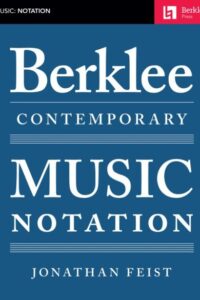
Who was Sorabji?
Kaikhosru Shapurji Sorabji: The Hermit of Modernist Maximalism
In the often-crowded pantheon of 20th-century composers, Kaikhosru Shapurji Sorabji (1892-1988) occupies a unique and enigmatic niche. A composer of staggering ambition, labyrinthine complexity, and self-imposed isolation, Sorabji crafted some of the most monumental, technically demanding, and stylistically idiosyncratic music ever conceived. His work, largely ignored during his lifetime and still challenging audiences today, represents a singular path through modernism – one defined by maximalism, intricate ornamentation, transcendental virtuosity, and a fierce, almost hermetic, independence.

Biography: A Self-Forged Identity
- Birth & Heritage: Born Leon Dudley Sorabji on August 14, 1892, in Chingford, Essex, England. His father was a Parsi engineer from India (thus the Persian-derived name Sorabji), and his mother was English-Spanish. This mixed heritage profoundly shaped his sense of identity, though he felt alienated from both cultures.
- The Name: Around 1914, he legally changed his name to Kaikhosru Shapurji Sorabji. “Kaikhosru” and “Shapurji” were Persian names chosen for their resonance and connection to ancient Persian history and Zoroastrianism, reflecting his deliberate construction of a unique persona.
- Musical Formation: Largely self-taught. He received some piano lessons in his youth but had no formal composition training. His musical education came through voracious listening, score study (especially Bach, Liszt, Busoni, Debussy, Ravel, Scriabin, Szymanowski, Medtner), and wide reading in literature, philosophy, and the occult.
- Early Career & Criticism: Worked as a music critic (under the pseudonym “S. Godfrey”) for outlets like The New Age and The New English Weekly from the 1910s to the 1930s. His critiques were famously acerbic, insightful, and often scathing, particularly targeting English musical provincialism and composers he deemed mediocre (which was most of them).
- The Recluse: Deeply disillusioned by the musical establishment and critical reception to his early performances (which were rare and often controversial), Sorabji gradually withdrew from public musical life starting in the late 1930s. After his mother’s death in 1940, he retreated almost completely to his secluded home “The Eye” in Corfe Castle, Dorset, where he lived with his companion, Reginald Norman Best, until his death. He forbade performances of his music for decades.
- The Ban Lifted: In 1976, pressured by a growing underground interest spearheaded by pianists like Yonty Solomon and Alistair Hinton (who later became his literary executor), Sorabji reluctantly lifted the ban on performances, provided he approved the performer.
- Death: Sorabji died on October 15, 1988, in Winfrith Newburgh, Dorset, leaving behind a colossal legacy of unpublished manuscripts.
Works: Monuments of Sound

Sorabji’s output is vast and overwhelmingly dominated by solo piano music, though he also composed orchestral works, chamber music, organ symphonies, and songs. His works are renowned for their extreme length, density, and technical difficulty, pushing the boundaries of playability.
- Key Masterpieces:
- Opus Clavicembalisticum (1930): His most famous (or infamous) work. A colossal 4+ hour piano epic in 12 movements (including fugues, passacaglias, toccatas, cadenzas), often considered one of the most challenging solo piano works ever written. A summit of contrapuntal complexity and virtuosic display.
- Symphonic Variations for Piano (1935-37): Another monumental work, exploring vast variation forms over an extended duration.
- Sequentia Cyclica super “Dies iræ” ex Missa pro Defunctis (1948-49): A massive cycle of 27 variations on the “Dies Irae” chant, demonstrating his intricate contrapuntal and transformative skills.
- 100 Transcendental Studies (1940-44): True to their name, these studies explore extreme technical and expressive demands far beyond those of Liszt or Chopin.
- Symphonies for Solo Piano: Several exist, including his Symphony No. 2 (“Jāmī”), blending orchestral textures and scope onto the piano.
- Gulistān – Nocturne for Piano (1940): A prime example of his lush, perfumed, and incredibly intricate “Persian”-inspired style.
- Concerti: He wrote several for solo piano and orchestra (e.g., Concerto per suonare da me solo e senza orchestra, per divertirsi), which are symphonic in scale and require superhuman virtuosity.
- Symphonies for Organ: Vast, complex works exploring the sonic possibilities of the instrument.
Analysis of Style: A Universe of Complexity
Sorabji’s style is instantly recognizable yet difficult to categorize. It synthesizes diverse elements into a unique and overwhelming whole:
- Maximalism: This is the defining characteristic. Sorabji embraced extremes:
- Length: Works lasting several hours are common.
- Density: Highly polyphonic textures, often with multiple independent melodic lines woven together in complex counterpoint (influenced by Bach, Busoni).
- Virtuosity: Demands transcendental technique – cascades of notes, complex polyrhythms, wide leaps, immense power, and extreme delicacy. He wrote as if the pianist had four hands.
- Ornamentation: Baroque-like ornamentation (trills, mordents, turns, grace notes) is ubiquitous, often layered and integral to the texture, creating shimmering, kaleidoscopic surfaces (influenced by Scriabin, Szymanowski, Middle Eastern/Persian music).
- Dynamic Range: From barely audible whispers to thunderous, percussive climaxes.
- Harmony: A complex fusion:
- Rooted in late-Romantic chromaticism (Scriabin, Szymanowski, early Schoenberg).
- Freely employed dissonance, clusters, and intricate chord structures.
- Often retained a sense of tonal centers or polarity, even amidst dense chromaticism (unlike strict atonality).
- Incorporated modal inflections, sometimes evoking Persian or Spanish flavors.
- Rhythm: Highly complex and fluid:
- Frequent use of polyrhythms (multiple simultaneous rhythms), cross-rhythms, and nested tuplets (triplets within quintuplets, etc.).
- Tempo often fluctuates wildly, requiring immense control.
- A sense of improvisatory freedom within highly structured forms.
- Form: Often large-scale, complex, and idiosyncratic:
- Favored variations (passacaglias, chaconnes), fugues, toccatas, and intricate multi-movement structures (like the Opus Clavicembalisticum).
- Forms were often expansive and cumulative, building through layered repetition and intensification rather than traditional development.
- Architecture was paramount, even in the densest textures.
- Influences (Assimilated, Not Imitated):
- Ferruccio Busoni: The most profound influence. Busoni’s ideas of “Young Classicism,” the transcendental potential of the piano, the fusion of Bachian counterpoint with modern harmony, and the concept of “Junge Klassizität” resonated deeply. Sorabji dedicated his Opus Clavicembalisticum to Busoni’s memory.
- Franz Liszt: Virtuosity, thematic transformation, large-scale forms, and the symphonic poem concept translated to piano.
- J.S. Bach: Contrapuntal mastery, structural rigor, and the use of forms like fugue and passacaglia.
- Alexander Scriabin: Mysticism, harmonic language, dense textures, and ecstatic climaxes.
- Karol Szymanowski: Sensuous harmony, intricate ornamentation (especially in the “Persian” inspired works like Métopes and Masques), and voluptuous textures.
- Debussy & Ravel: Color, texture, exoticism, and pianistic refinement.
- Mediterranean & Persian Cultures: While not authentically recreating these styles, he evoked their essence through ornamentation, melodic turns, and titles (Gulistān, Jāmī), reflecting his fascination with his Persian heritage and the wider Orient.
- Aesthetic: Sorabji’s music aimed for:
- Transcendence: Pushing beyond perceived limits of instrument, performer, and listener.
- Luxuriance & Opulence: A rich, sensual, almost decadent sound world.
- Intellectual Rigor: Underlying the sensual surface was meticulous structural planning.
- Individualism: A complete rejection of prevailing trends (serialism, neoclassicism, minimalism) in favor of his own uncompromising vision.
Legacy: From Obscurity to Cult Status
Sorabji’s legacy is complex and evolving:
- Decades of Neglect: His self-imposed exile and performance ban meant his music was virtually unknown outside a tiny circle for nearly 40 years. Manuscripts were inaccessible, unplayable, and unpublished.
- The Pioneers (1970s-): The lifting of the ban sparked interest. Pianists like Yonty Solomon, Michael Habermann, Geoffrey Douglas Madge (who made the first complete recording of Opus Clavicembalisticum in 1977), and later Marc-André Hamelin, Jonathan Powell, Fredrik Ullén, and Ronald Stevenson began the monumental task of learning, performing, and recording his works. This required immense dedication and technical prowess.
- Publication & Scholarship: The Sorabji Archive, established by Alistair Hinton (Sorabji’s literary executor), has been crucial in cataloging, editing, and facilitating the publication of scores (primarily by Dover Publications and The Sorabji Music Archive). Scholarly work is gradually increasing.
- Recordings Renaissance: The CD era and digital distribution (YouTube, streaming) have been transformative. Dedicated labels (Altarus, BIS, Toccata Classics, Piano Classics) have released numerous recordings, making this once-inaccessible music available globally. Complete cycles of the 100 Studies and other major works are underway.
- The Cult & The Challenge: Sorabji remains a “composer’s composer” and a cult figure. His music is not mainstream concert fare due to its extreme demands and duration. However, it commands deep respect and fascination among pianists, composers, and listeners drawn to its unique sound world and uncompromising vision. He is seen as the ultimate iconoclast, forging a path utterly independent of 20th-century musical fashions.
- Influence: His direct influence on other composers is hard to pinpoint due to his obscurity, but he stands as a powerful symbol of uncompromising artistic integrity and the exploration of extreme complexity and virtuosity. Composers interested in maximalism, intricate counterpoint, or pushing pianistic limits inevitably encounter his shadow.
- Copyright Controversy: The complex copyright status of his works (involving the Sorabji Archive and publishers) has sometimes been a point of friction within the community of performers and scholars seeking access.
Sorabji: The Solitary Giant
Kaikhosru Shapurji Sorabji was a true original. He inhabited a musical universe entirely of his own making, synthesizing diverse influences into a style characterized by unparalleled complexity, sensuous opulence, and transcendental ambition. His deliberate withdrawal from the world ensured decades of obscurity, but the dedication of pioneering performers and the power of recording technology have brought his extraordinary soundscapes to light. While his music remains challenging and demanding, it offers unparalleled rewards: a journey into a world of labyrinthine beauty, overwhelming power, and intellectual fascination. Sorabji stands as a testament to the power of an utterly individual artistic vision, uncompromising in its scope and ambition, a solitary giant whose monumental creations continue to challenge and inspire. He redefined the possible for the piano and left a legacy that continues to unfold as more performers dare to scale his musical Himalayas.
“In the Hothouse” is one of Sorabji’s most evocative and frequently performed works, serving as a perfect entry point into his dense, sensuous sound world. Here’s a detailed look at this fascinating piece:
Context: Two Piano Pieces (1918)
- Composed: 1918 (early in Sorabji’s career, age 26).
- Publication: First published in 1920, making it one of the earliest Sorabji works available in print.
- The Pair: “In the Hothouse” is paired with “Toccata” – a contrasting, hyper-virtuosic, and structurally complex piece showing his Busoni/Liszt influences. “In the Hothouse” offers the sensual, atmospheric counterpoint.
- Significance: Represents Sorabji’s early mastery of texture, harmony, and evocative atmosphere. It predates his gargantuan works but already displays his unique voice.
“In the Hothouse”: A Sensory Immersion
- Title & Imagery: The title instantly conjures an environment: humid, lush, teeming with exotic, overripe plant life, heavy perfumes, and stifling, enclosed heat. Sorabji translates this sensory overload into sound.
- Form & Structure: Relatively free and rhapsodic. It unfolds as a continuous, organic stream of consciousness rather than adhering to strict classical forms. Think of it as an elaborate, decadent arabesque.
- Style & Character:
- Extreme Sensuality: This is the defining feature. The music drips with lush, complex harmonies and suffocatingly rich textures.
- Harmony: Deeply chromatic, rooted in late Scriabin and early Szymanowski. Expect dense, constantly shifting chords: augmented harmonies, whole-tone inflections, unresolved dissonances creating tension, and sudden moments of surprising consonance like shafts of light piercing foliage. It avoids traditional tonality but gravitates around implied centers.
- Texture: Thick, layered, and constantly in motion. Tremolos, trills, rapid filigree (ornamental passages), and cascading arpeggios create a shimmering, humid haze. Melodies are often embedded within this dense undergrowth rather than standing clearly apart. The writing often requires the pianist to sustain multiple layers simultaneously.
- Rhythm: Fluid and flexible, often obscured by the sheer density of notes and ornamentation. Rubato (expressive tempo fluctuations) is essential. While less overtly complex polyrhythmically than his later works, the rhythmic flow feels organic and improvisatory.
- Dynamics & Articulation: Wide dynamic range, often shifting suddenly between extremes (e.g., thunderous climaxes collapsing into fragile whispers). Articulation varies from sharp staccatos to legatissimo passages that blur together. Pedaling is crucial for sustaining the harmonic haze and creating resonance.
- Ornamentation: Quintessential early Sorabji. Trills, mordents, turns, and grace notes are not mere decoration; they are the texture, creating constant flickering movement and contributing to the claustrophobic, teeming atmosphere. This foreshadows the intricate ornamentation dominating his mature style.
- Emotional Landscape: Evokes opulence, decadence, languor, mystery, stifling heat, hidden dangers, and overwhelming sensory stimulation. There’s a sense of beauty bordering on the grotesque due to its sheer intensity.
Influences Audible in “In the Hothouse”
- Scriabin (Primary): The harmonic language (mystic chords, unresolved dissonance, ecstatic climaxes), the sensual atmosphere, and the use of trills/tremolos are deeply indebted to Scriabin’s late sonatas and poems (e.g., Vers la flamme). Sorabji pushes Scriabin’s decadence further.
- Szymanowski: The opulent textures, perfumed harmonies, and “orientalist” exoticism (though abstracted here) strongly recall Szymanowski’s “Métopes” or “Masques,” which Sorabji admired deeply.
- Debussy: The focus on atmosphere, texture, and harmonic color (whole-tone scales, parallel chords) shows Debussy’s influence, though rendered with far greater density and intensity.
- Ravel: The virtuosic filigree and lush harmonies (think “Gaspard de la Nuit,” especially “Ondine” or “Le gibet”) are a touchstone, again amplified.
- Liszt: The rhapsodic freedom and dramatic gestures hint at Liszt, though filtered through a post-Scriabinesque lens.
Performance Challenges
- Texture & Balance: Maintaining clarity amidst the dense, rapidly shifting textures is paramount. The pianist must carefully voice chords and layers to prevent muddiness while sustaining the essential harmonic haze.
- Ornamentation as Texture: Executing the constant ornamentation smoothly and evenly, integrating it into the melodic and harmonic flow rather than treating it as mere decoration.
- Dynamic Control: Navigating the extreme dynamic contrasts and sudden shifts without sounding jarring. Creating a true pianissimo shimmer within complexity is incredibly difficult.
- Rubato & Phrasing: Applying expressive tempo fluctuations naturally while maintaining the overall structural coherence and forward momentum of the rhapsodic form.
- Pedaling: Using the pedal to create resonance and blend without causing harmonic blurring or loss of rhythmic definition. Requires exceptional sensitivity.
- Stamina & Focus: While shorter than his later works (typically 12-15 minutes), the piece demands intense concentration and physical control to sustain the atmosphere and navigate the technical intricacies.
Legacy & Significance of “In the Hothouse”
- Accessibility: It remains one of Sorabji’s most “accessible” works due to its evocative title, relatively shorter duration, and concentrated expression. It’s a frequent choice for pianists introducing audiences to Sorabji.
- Blueprint: It serves as a crucial blueprint for Sorabji’s mature style, showcasing his core preoccupations: sensuality, harmonic density, intricate ornamentation as texture, and atmospheric evocation, all present in embryonic form.
- Performance History: Despite Sorabji’s later ban, “In the Hothouse” (along with the Toccata) was one of the few pieces occasionally performed during his lifetime (e.g., by Sorabji himself and pianist Reginald Paul) and became a key work for the pioneering generation post-1976 (Yonty Solomon, Michael Habermann, Marc-André Hamelin, Jonathan Powell, Fredrik Ullén).
- Gateway Piece: It functions as a vital “gateway drug” into Sorabji’s world. Its success in conveying its intense atmosphere often encourages listeners to explore his more monumental, complex works.
- Standalone Masterpiece: Regardless of its role as an introduction, it stands as a perfectly formed and powerful piece of early modernist piano writing, a miniature tone poem of extraordinary evocative power.
“In the Hothouse” is a sun-drenched, overripe, and intoxicating immersion into Sorabji’s unique aesthetic. It captures the essence of his sensual maximalism in a concentrated dose, showcasing his debt to Scriabin and Szymanowski while asserting his own distinct voice. Its evocative power, technical brilliance, and relative brevity ensure its enduring place as one of his most beloved and frequently performed works, offering a compelling glimpse into the hothouse of Sorabji’s extraordinary musical imagination.
| Artist or Composer / Score name | Cover | List of Contents |
|---|---|---|
| The Real Book 6th Ed |
 |
The Real Book 6th Ed |
| The Real Book Bass Clef 5th Edition |
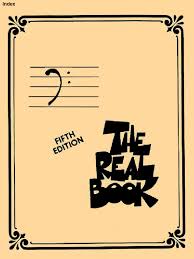 |
The Real Book Bass Clef 5th Edition |
| The Real Book Bass Clef 6th Edition |
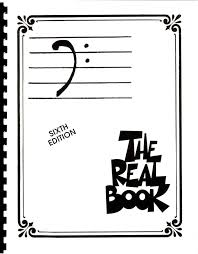 |
The Real Book Bass Clef 6th Edition |
| The Real Book Bass Clef Volume II (2) |
 |
The Real Book Bass Clef Volume II (2) |
| The Real Book of Blues – 225 great blues Melody Line, chords, lyrics |
 |
The Real Book of Blues |
| The Real Book Of Funk Jazz |
 |
real book of funk |
| The Real Book Of Jazz Volume I 5th Edition sheet music pdf |
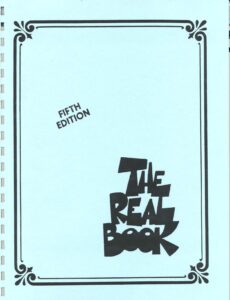 |
real book of jazz |
| The Real Book of Jazz Volume II (All new) |
 |
The Real Book of Jazz Volume II |
| The Real Book of Jazz Volume III (all new) |
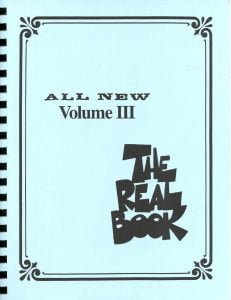 |
The Real Book of Jazz Volume III |
| The Real Book of Jazz Volume IV for C Instruments |
 |
The Real Book of Jazz Volume IV for C Instruments |
| The Real Book of Jazz Volume V |
 |
The Real Book of Jazz Volume V |
| The Real Book Song Finder (Songfinder) |
 |
|
| The Real Broadway Book for C Instruments |
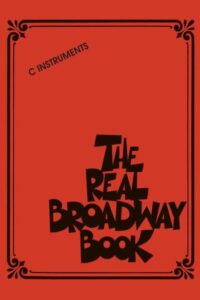 |
The Real Broadway Book for C Instruments Contents |
| The Real Christmas Book Bb Instruments Fake Book |
 |
The Real Christmas Book Bb Instruments Fake Book |
| The Real Christmas Book C Instruments Fake Book |
 |
The Real Christmas Book Fake |
| The Real Christmas Book Eb Instruments Fake Book |
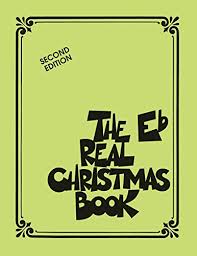 |
The Real Christmas Book Eb Instruments Fake Book |
| The Real Country Book C Instruments |
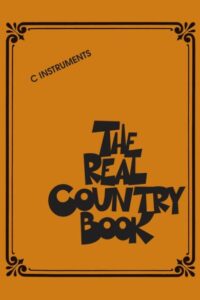 |
The Real Country Book C Instruments Contents |
| The Real Dixieland Book C Instruments |
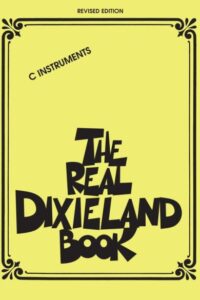 |
The Real Dixieland Book C Instruments Contents |
| The Real JAZZ Vol. 5 |
 |
|
| The Real Latin Book C Instruments |
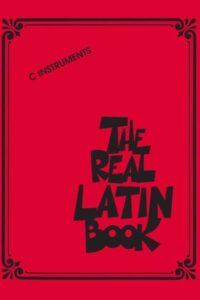 |
The Real Latin Book C Instruments Contents |
| The Real Little Classical Fake Book (over 600 Classical Themes and Melodies |
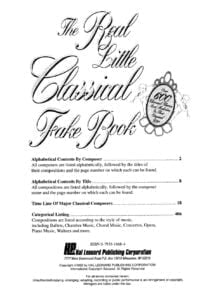 |
Real classical fake book sheet music |
| The Real Pop Book Volume 1 C Instruments |
 |
The Real Pop Book Volume 1 C Instruments Contents |
| The Real R&B Book C Instruments Rhythm and blues R’n’B |
 |
The Real R&B Book C Instruments cONTENTS |
| The Real Rock Book Volume I C Instruments |
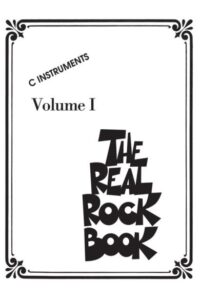 |
The Real Rock Book Volume I C Instruments Contents |
| The Real TAB Book Volume I Guitar |
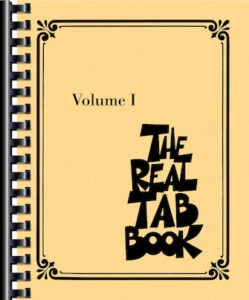 |
The Real Tab Book – Volume I Guitar Contents |
| The Red Book Great Piano Solos |
 |
The Red Book Great Piano Solos |
| The Reggae Songbook – Music Sales Corporation |
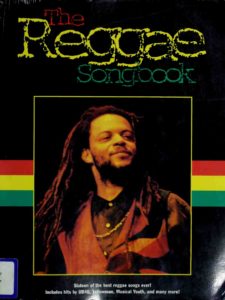 |
The Reggae Songbook – Music Sales Corporation |
| The Rest Is Noise Listening To The Twentieth Century by Alex Ross (Book) |
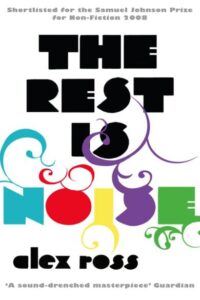 |
|
| The Ring – End Credits Hans Zimmer |
 |
|
| The Rock Story Edited By Theo Cateforis (Book) |
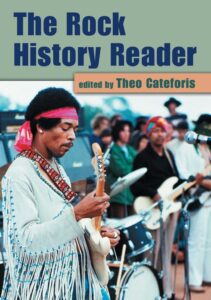 |
|
| The Rocky Horror Picture Show Science Fiction Double | The Rocky Horror Picture Show – Science Fiction Double | |
| The Rolling Stones Let It Bleed Authentic Guitar TABs |
 |
The Rolling Stones Let It Bleed Authentic Guitar TABs |
| The Rolling Stones – Best Of (Guitar Bass Drums Songbook) |
 |
The Rolling Stones – Best Of (Guitar Bass Drums Songbook) |
| The Rolling Stones – Get Off Of My Cloud | ||
| The Rolling Stones Classics – Volume One – Off The Record (Guitar Bass Drum Songbook) |
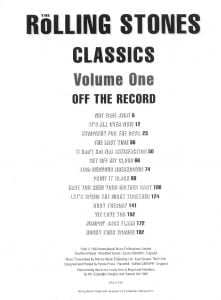 |
The Rolling Stones Classics – Volume One- Off The Record (Guitar Bass Drum Songbook) |
| The Rolling Stones Guitar Play-Along Volume 66 – with audio MP3 embedded with TAB |
 |
The Rolling Stones Guitar Play |
| The Rolling Stones Rock Score |
 |
|
| The Rolling Stones Songbook (Sheet Music Guitar Tab) |
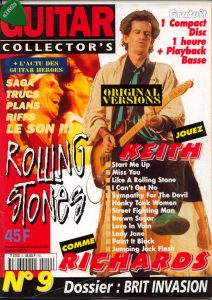 |
|
| The Russian School of Piano playing 1 |
 |
|
| The Russian School Of Piano Playing 2 |
 |
|
| The Sapin (Musescore File).mscz | ||
| The School Of Velocity Op 299 No. 1 (Musescore File).mscz | ||
| The Scientist – Coldplay Piano Arrangement(1) (Musescore File).mscz | ||
| The Secret History of Rock. The Most Influential Bands You’ve Never Heard |
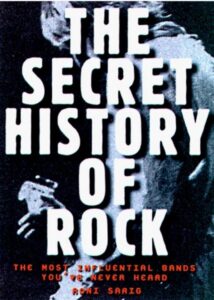 |
|
| The secret Life of Glenn Gould, A Genius in Love, by Michael Clarkson (2010) Biography |
 |
|
| The Seekers Hit Songs And Folk Songs No. 2 Piano Vocal Guitar Chords |
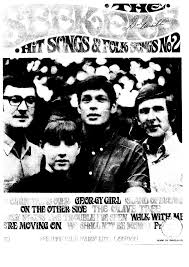 |
The Seekers Hit Songs And Folk Songs No. 2 Piano Vocal Guitar Chords |
| The Seekers Hit Songs And Folk Songs Piano Vocal Guitar Chords | The Seekers Hit Songs And Folk Songs No. 2 Piano Vocal Guitar Chords | The Seekers Hit Songs And Folk Songs Piano Vocal Guitar Chords |
| The Shadow Of Your Smile (Musescore File).mscz | ||
| The Shadow of your Smile Johnny Mandel Francis Webster Jazz Standard arr. Carsten Gerlitz |
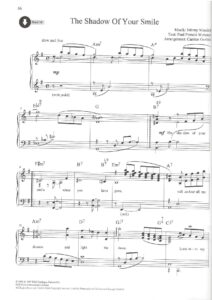 |
|
| The Shadow of your Smile(lead sheet) Mandel & Webster |
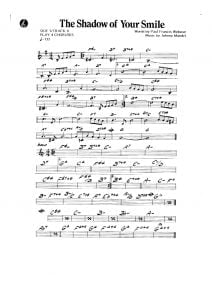 |
|
| The Shadows – 20 Big Hits – Songbook |
 |
The Shadows songbook |
| The Shadows Easy Guitar Hits |
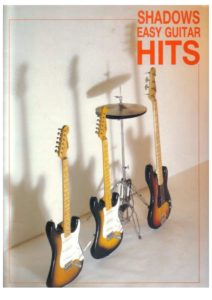 |
The Shadows Easy Guitar Hits |
| The Shape of Water (Alexandre Desplat) | ||
| The Shawshank Redemption – Stoic Theme – Thomas Newman | ||
| The Simpson’s Theme (Piano) Sheet Music |
 |
|
| The Simpsons – Main Title | ||
| The Simpsons Baby On Board | The-Simpsons-Baby-On-Board | |
| The Simpsons Minimum Wage Nanny | The Simpsons Minimum Wage Nanny | |
| The Simpsons Songbook – Danny Elfman |
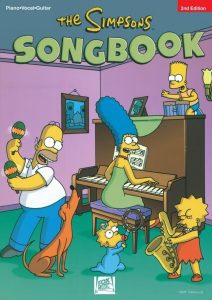 |
The Simpsons songbook |
| The Simpsons Theme (Musescore File).mscz | ||
| The Simpsons Theme by Danny Elfman |
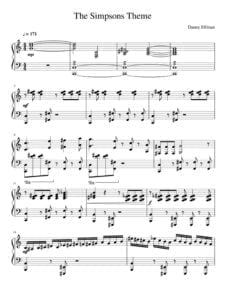 |
|
| The Sims Build Theme No. 1 |
 |
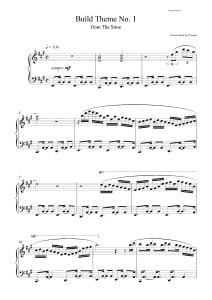 |
| The Slick Book |
 |
|
| The Smiths – Anthology |
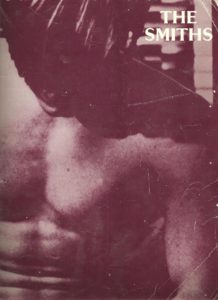 |
The Smiths – Anthology |
| The Smiths Best Of |
 |
The Smiths Best Of |
| The Song Is You – Jazz Standard | The Song Is You – Jazz Standard | |
| The Song Of Purple Summer (Musescore File).mscz | ||
| The Song Of Purple Summer Dunkan Sheik And Steven Sater (Musicals) |
 |
|
| The Song Writing Genius Within You by Geoffrey Williams (Book)2008 |
 |
|
| The Sound Of Music – Climb Every Mountain – Julie Andrews | ||
| The Sound Of Music – Rodgers & Hammerstein (Sheet Music Book) Vocal selections |
 |
The Sound of Music |
| The Sound Of Music Main Title Overture Piano Duet | The Sound Of Music Main Title Overture Piano Duet | |
| The Sound Of Music Piano Vocal Selections Revised Edition Rodgers and Hammerstein |
 |
The Sound Of Music Piano Vocal Selections Revised Edition Rodgers and Hammerstein |
| The Sound Of Silence – Simon & Garfunkel (Musescore File).mscz | ||
| The Source 2nd Ed. The Dictionary Of Contemporary And Traditional Scales For Classical, Jazz Etc. By Steve Barta |
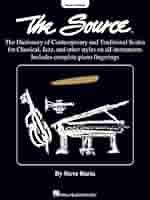 |
|
| The Spirit Of God Like a Fire is Burning Mixed Chrus and Organ or Pino by Mark Wilberg Ssaattbb |
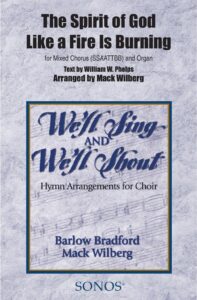 |
|
| The Sting Piano solo music by Scott Joplin adapted by Marvin Hamlisch |
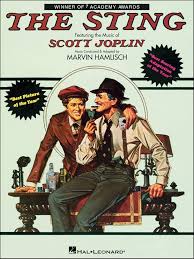 |
The Sting Piano solo music by Scott Joplin adapted by Marvin Hamlisch |
| The Story Of Music From Babylon To The Beatles How Music Has Shaped Civilization (Book) |
 |
|
| The Streets Of Laredo – American Cowboy Song Johnny Cash (Musescore File).mscz | ||
| The Strokes – Is This It (guitar with TABs) |
 |
The Strokes |
| The Tao Of Jazz Improvisation A Martial Arts Training Method For Jazz Improvisation (Book) |
 |
|
| The Temptations – Greatest Hits Piano Vocal Chords |
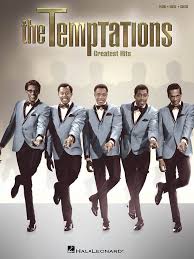 |
The Temptations – Greatest Hits Piano Vocal Chords |
| The Third Man Theme By Anton Karas Guitar TABs |
 |
|
| The Three Tenors Songbook (for high voice and piano) |
 |
The Three Tenors Songbook |
| The Time Machine – The Eloi – Klaus Badelt | The Time Machine The Eloi Klaus Badelt 1st page | |
| The Tokens – The Lion Sleeps Tonight (Piano Solo arr. sheet music, Noten, partitura, partition) |
 |
|
| The Tokens – The_Lion_Sleeps_Tonight Piano Solo arr.mscz | ||
| The Tom And Jerry Show – Hiromi Uehara (Piano Solo Sheet Music) (Musescore File).mscz | ||
| The Tommy Flanagan Collection |
 |
The Tommy Flanagan Collection |
| The Truman show – Dreaming Of Fiji – Philip Glass |
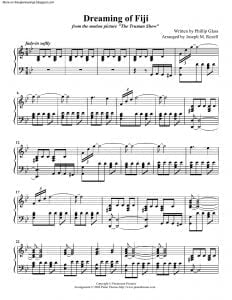 |
|
| The Truman show – Reunion – Philip Glass | ||
| The Truman show – Truman Sleeps – Philip Glass | Truman sleeps | |
| The Trumanshow – Dreaming Of Fiji – Philip Glass | ||
| The Trumanshow – Truman Sleeps – Philip Glass | ||
| The Ultimate Fake Book 2nd Edition for keyboard, vocal, guitar and all C inst. |
 |
The Ultimate Fake Book 2nd Edition for keyboard, vocal, guitar and all C inst |
| The Ultimate Gospel Choir Book Vol4 |
 |
The Ultimate Gospel Choir Book Vol4 |
| The Ultimate Pop Rock Fake Book A-Z (ebook) |
 |
The Ultimate Pop Rock Fake Book A-Z (ebook) |
| The Ultimate Pop Rock Fake Book Joel Withburn |
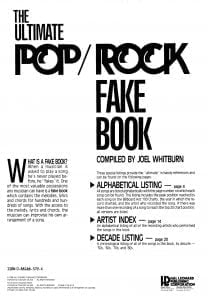 |
The Ultimate Pop Rock Fake Book Joel Withburn |
| The Untouchables – Main Title – Morricone (Musescore File).mscz | ||
| The Used – Smother Me | ||
| The Utimate Broadway Fake Book |
 |
The Utimate Broadway Fake Book – Hal Leonard |
| The Very Best Of John Williams – Dan Coates arr. easy piano |
 |
The Very Best Of John Williams – Dan Coates arr. easy piano |
| The Very Best Pop Songs Of All Time 19 of the best-ever pop songs Piano voica and guitar chords |
 |
The Very Best Pop Songs Of All Time |
| The Village – The Gravel Road – James Newton Howard | ||
| The Visible And Invisible In Pianoforte Technique (By Tobias Matthay) (1947) |
 |
|
| The way we were – Barbara Streisand | The way we were – Barbara Streisand | |
| The Way We Were – Piano And Vocal (Musescore File).mscz | ||
| The Way We Were – Piano and vocal Barbra Streisand | The Way We Were – Piano and vocal | |
| The Way We Were (Lead sheet with Guitar chrods and lyrics ) |
 |
|
| The Way We Were (Lead Sheet With Lyrics ) (Musescore File).mscz | ||
| The Way We Were (Musescore File).mscz | ||
| The Wedding Night (Frankenstein OST) Patrick Doyle | ||
| THE WHO – The Who Anthology |
 |
The Who Anthology Contents |
| The Who – Guitar Play Along Volume 108 WITH mp3 audio tracks with Tablature |
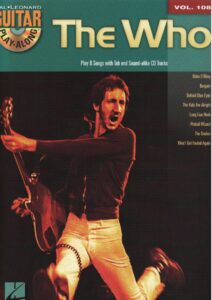 |
Guitar Play-Along Volume 108 – The Who |
| The Who – Tommy (Piano-Vocal-Guitar) |
 |
The Who – Tommy |
| The Who Quadrophenia Piano Vocal Guitar Chords Songbook |
 |
The Who Quadrophenia Piano Vocal Guitar Chords Songbook |
| The Who Rockscore |
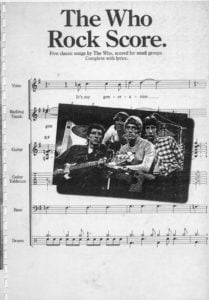 |
|
| The Who The Acoustic Guitar Collection Guitar Songbook TABs |
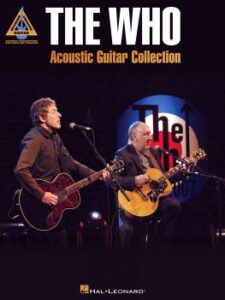 |
The Who The Acoustic Guitar Collection Guitar Songbook TABs contents |
| The Who The Definitive Collection Volume A E Guitar TABs Songbook |
 |
The Who The Definitive Collection Volume A E Guitar TABs Songbook |
| The winner takes it all (Abba) | ||
| The Witcher 3 Priscilla’s Song by Marcin Przybylowicz | The Witcher 3 Priscilla’s Song by Marcin Przybylowicz | |
| The Wizard of Oz – (Harold Arlen) Vocal & piano score |
 |
The Wizard of Oz – (Harold Arlen) -vocal.piano.score |
| The Wizard of Oz (The Musical Full Score with Piano) Harold Arlen and E.Y. Harburg |
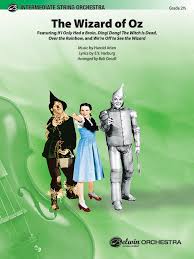 |
The Wizard of Oz (The Musical Full Score with Piano) Harold Arlen and E.Y. Harburg |
| The Wizard Of Oz The Musical by Andrew lloyd Webber |
 |
The Wizard Of Oz Musical Webber |
| The Wonder of Life (Afterwards OST) Alexandre Desplat | ||
| The Wonders – That Thing You Do | ||
| The Words And Music Of Frank Zappa By Kelly Fisher Lowe (Book) |
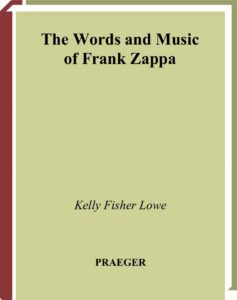 |
|
| The World Hits Of Oldies (Jazz Fake book) |
 |
|
| The World’s best music Vol. V Famous compositions for the piano |
 |
The World’s best music V Famous compositions for the piano |
| The World’s Greatest Fake Book |
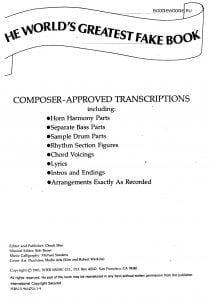 |
Greatest Fake Book |
| The Worlds best music Vol. I Famous compositions for the piano |
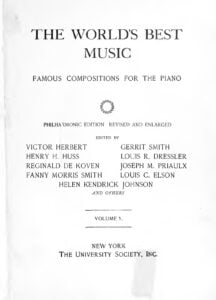 |
The Worlds best music I Famous compositions for the piano |
| The Yellow Rose Of Texas – Traditional (Musescore File).mscz | ||
| The Young Pianist’s Anthology Of Modern Music (1972) |
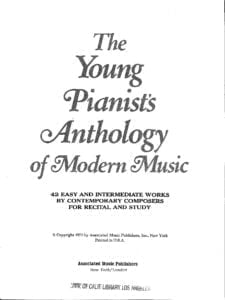 |
The Young Pianist’s Anthology Of Modern Music (1972) |
| The Zombies Greatest Hits Songbook |
 |
The Zombies Songbook |
| Thegogos – Head Over Heels | ||
| Thelonious Monk Blue Sphere |
 |
|
| Thelonious Monk easy piano solos Jazz |
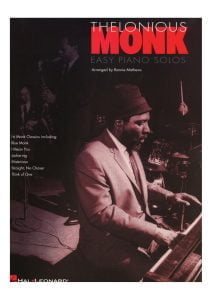 |
Thelonious Monk easy piano |
| Thelonious Monk – Japanese Folk song (Kojo No Tsuki) (sheet music transcription) |
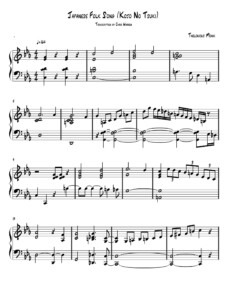 |
|
| Thelonious Monk – Jazz Masters |
 |
Thelonious Monk – Jazz Masters |
| Thelonious Monk – Originals and standards |
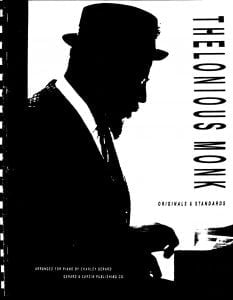 |
Thelonius Monk originals |
| Thelonious Monk – The Man I Love (solo) Gershwin |
 |
|
| Thelonious Monk & Cootie Williams – ‘Round Midnight | Thelonious Monk & Cootie Williams – ’round Midnight | |
| Thelonious Monk Collection | Thelonius Monk Collection | |
| Thelonious Monk Collection 12 Note For Note Solo Piano Transcriptions Artist Piano Transcriptions |
 |
Thelonious Monk Collection 12 Note For Note Solo Piano Transcriptions Artist Piano Transcriptions |
| Thelonious Monk Compositions (as recorded by himself) | Thelonious Monk’s Compositions Fake Book – (Jazz) | |
| Thelonious Monk Fake Book Bb Edition 70 Monk Compositions |
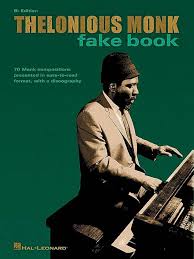 |
Thelonious Monk Fake Book Bb Edition 70 Monk Compositions |
| Thelonious Monk Fake Book Monk C Edition 70 Monk Compositions |
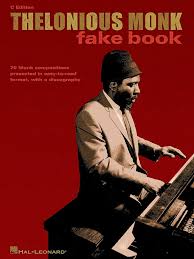 |
Thelonious Monk Fake Book Monk C Edition 70 Monk Compositions |
| Thelonious Monk For Guitar with TABs |
 |
Thelonious Monk For Guitar |
| Thelonious Monk Intermediate Piano Solos Arranged By Ronnie Mathews 14 Arrangements |
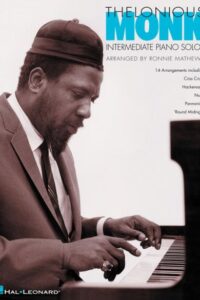 |
Thelonious Monk Intermediate Piano Solos Arranged By Ronnie Mathews 14 Arrangements |
| Thelonious Monk Jazz Piano Collection |
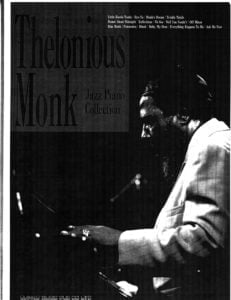 |
Thelonious Monk Jazz Piano Collection |
